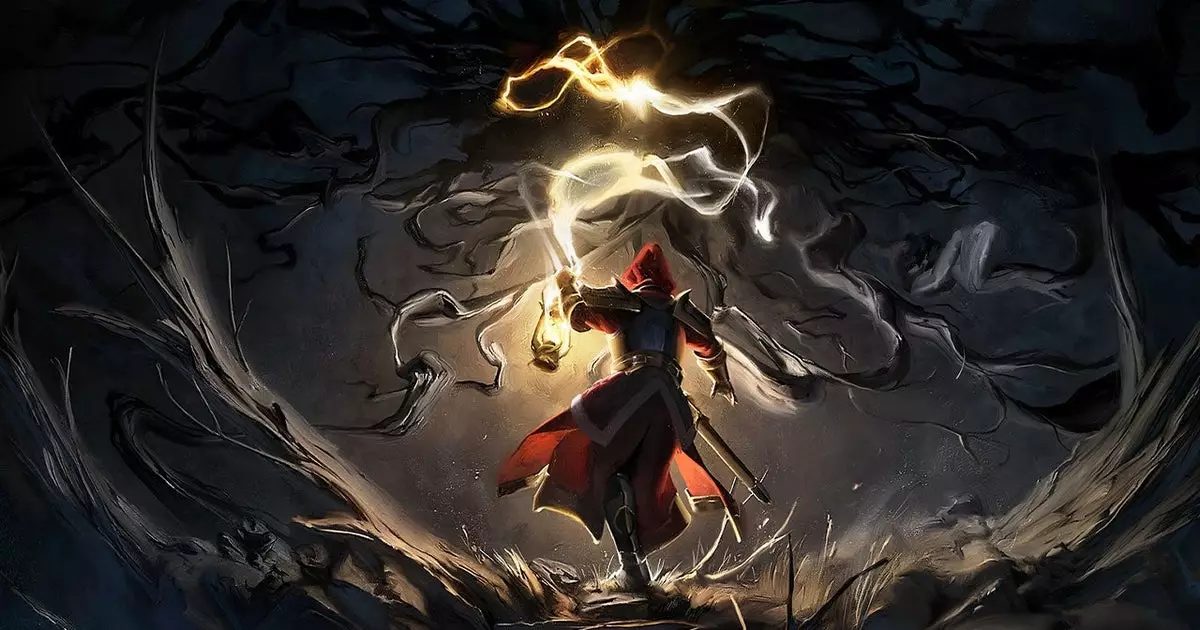From the moment I plunged into the immersive universe of Mandragora: Whispers Of The Witch Tree, I felt a mixture of apprehension and excitement. Initially, I found myself in a whirlpool of uncertainty, pondering if this game would be merely another trap in the saturated market of dark fantasy side-scrollers. It is easy to draw parallels with past titles, as Mandragora stylistically evokes chaotic echoes of the iconic Castlevania series while inviting comparisons to the visually stunning Trine. It features RPG classes and intricate skill trees adorned with dozens of crafting possibilities, boasting hundreds of items to discover. Yet, beneath its surface, there lies a narrative depth that piqued my interest.
What really drew me into this world was its notably rich storytelling, a signature that stands out in an era where gameplay mechanics often overshadow narrative substance. Mandragora unfolds within an apocalyptic realm dominated by a brooding figure known as the King Priest, who rules the Crimson City with an iron fist, ostensibly to protect his subjects from the nightspawn lurking in the shadows. The King Priest, evoking imagery reminiscent of Judge Claude Frollo from Disney’s The Hunchback of Notre-Dame, possesses not just authority but a sadistic flair for cruelty that propels you into the heart of darkness. As a player, you embody a grimly curious inquisitor entrusted with an unsettling task after the harrowing encounter with a tortured witch—a decision that intricately entwines your fate with a mysterious power that now stems from within.
A Captivating Narrative Drawing Life
As the story unfolds, players undertake the dual journey of unraveling their own identity while saving others from the grips of despair. Rather than being a disposable trope, the narrative becomes a vital pulse, coursing through the game like lifeblood. The juxtaposition between the protagonist’s moral dilemmas and the ruthlessness exhibited by the King Priest creates an intricate web of conflict and character development that feels all the more engaging.
What enhances this dark tapestry is the introduction of characters peppered throughout the game. Notable NPCs emerge, offering rich dialogues that contribute to fleshing out this murky world where betrayal and loyalty reside in constant ebb and flow. Early interactions, particularly with the merchant inadvertently ensnared in your path, cleverly convert mundane gameplay elements into a narrative commentary that fuses the player’s actions with character development—a technique all too rare in this genre.
The Mechanics: Engaging Combat and Navigational Intricacies
On the surface, Mandragora boasts the tried-and-true mechanics of classic action RPGs, but it interweaves deeper elements that elevate the gameplay experience. The balance struck between the swift-paced nostalgia of early Castlevania titles and the complex upgrade systems typical of modern ARPGs signals a well-thought-out design philosophy. Combat encourages a dynamic strategy of stamina management and evasion, with various abilities and passive skills awaiting experimentation. My encounters with monstrous foes became exhilarating as players are tasked with mastering dodging and maneuvering in an environment alive with risks and rewards.
Nevertheless, I would be remiss not to mention some clunky animations and controls, which might not align with the fluid expectations set by contemporary titles. However, even these minor hitches do little to detract from the engrossing discovery of intertwined secrets and hidden pathways that would make even the most seasoned veteran of Souls-like games feel an adrenaline rush with every leap into unexplored territories.
Visual Aesthetic: A Distinctive Style
Visually, Mandragora captivates with an art direction that dwells in a shadowy realm, blending the eerie with the grotesquely beautiful. Character portraits drift into the uncanny, their unsettling expressions drawing you deeper into the fabric of this world. Though some critics have deemed them off-putting, I found them to be remarkable, merging the bizarre with captivating storytelling—an almost mesmerizing overture that plays into the game’s fanatical narrative.
As I navigate the labyrinthine layouts—the twisting pathways resembling the labyrinths from myth—a sense of wonder persists. Each fast-travel altar beckons me forward, a siren song promising secrets and revelations waiting yet undiscovered.
The earnestness with which Mandragora pursues its themes and narratives leaves me eagerly anticipating my next play session, wondering how far sideways this dive into darkness will lead me.


Leave a Reply